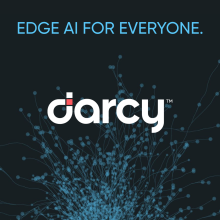EclipseCon 2022 Call for Proposals
Submissions are open for EclipseCon 2022! The conference is returning to Ludwigsburg, Germany, October 24 - 27. All proposals are due by June 15, 2022.
Submissions are open for EclipseCon 2022! The conference is returning to Ludwigsburg, Germany, October 24 - 27. All proposals are due by June 15, 2022.
We were glad to welcome AURA Healthcare during our April edition of the AICE monthly meetings.

